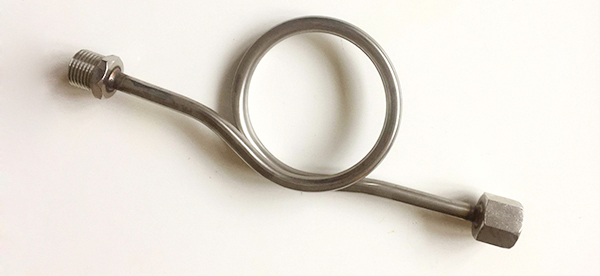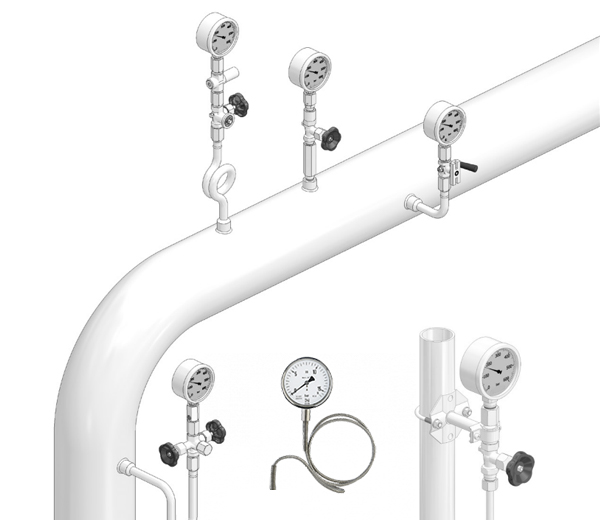- Gate valve
-
- DN1000 Extension stem double flange soft seal gate valveDIN F4 resilient seated gate valveDN450-1200 Resilient Seated Gate ValveDIN F5 resilient seated gate valveSocket connection soft seal gate valveUnderground cap soft seal gate valveBS5163 rising stem soft seal gate valveHard seal gate valveAPI slab Gate ValveStainless steel flange gate valveWafer knife gate valvePneumatic gate valveSoft seal gate valveExtension stem gate valveUL/FM fire protection groove ends gate valveRising stem forged steel gate valvecarbon steel gate valveStainless steel threaded gate valveDIN soft seal gate valveANSI soft sealing gate valve 200PSICast iron gate valveBS resilient seated gate valve
- Butterfly valve
-
- DN900 pneumatic triple eccentric hard seal butterfly valveD643H Triple Eccentric Butterfly ValveD343H Hard seal butterfly valveMulti standard EPDM seated butterfly valveSingle flange butterfly valveDN2000 Double eccentric butterfly valveFlange butterfly valveLug butterfly valveWafer butterfly valve with handleWorm gear operated butterfly valveWafer lined fluorine butterfly valveStainless steel wafer butterfly valveStainless steel flanged butterfly valveThree eccentric flange butterfly valvePneumatic flanged butterfly valvePneumatic wafer butterfly valveTriple eccentric butterfly valve wafer typeWafer butterfly valve ULC approvedInflatable seat butterfly valveHigh performance butterfly valveGrooved end butterfly valveElectric soft seal butterfly valveFlange fluorine lined butterfly valveHandle aluminum butterfly valveWorm Gear Aluminum Butterfly ValveFull PTFE lined butterfly valve wafer typeOne stem no-pin wafer butterfly valveMulti standard aluminum stem butterfly valveStainless Steel wafer Butterfly ValveAluminium handle operated lug butterfly valveLever Operated Flange Butterfly ValveButterfly valve stemButterfly valve discButterfly valve seat
- Ball valve
-
- DN1400 top-mounted eccentric semi-ball valveFlanged three-way ball valveFully welded ball valveNatural gas ball valveHigh platform flange ball valve1 PC ball valveFixed ball valvePTFE seat flanged ball valveMetal seat ball valveAPI 6D ball valve3 Piece ball valveFull Bore 3 way ball valve L-Port3 Way T-Port ball valve2PC Ball valve female thread stainless steel
- Globe Valve
-
- API Carbon Steel Globe ValveBellows Globe ValveStainless steel flange globe valveStainless steel thread S type globe valveStainless steel thread B type globe valveCast Steel Globe ValvePiston Globe ValveWCB Carbon Steel Globe Check Valveelectric motorized control stainless steel SS316 globe valveBrass Globe ValveCryogenic Globe valveHT200 Globe ValveThreaded Stainless Steel Globe ValveGG25 Globe ValveANSI API Cast Steel And Stainless Steel Globe valve
- Check valve
-
- Rubber seal check valveDN800 Slow closing check valveDN800 Rubber Disc Check ValveButterfly Buffering Check Valvecheck valve with counter weightSilent Check ValveWCB Swing check valveSwing Check ValveSingle Chip Check Valve H74WStainless Steel Wafer Check ValveSwing Start Check ValveFoot check valveAPI Swing Check ValveDIN Flange check valveSingle plate check valveLifting Check ValveBottom ValveHammer Diminish Noises Check ValveWafer Check ValveWafer dual plate check valve
- Control valve
-
- Static Balancing ValveCage Guided Sleeve Globe Control ValveDN1000 Piston Flow Regulating ValveDN1600 Electric Actuator Flow Regulating ValvePneumatic Flanged Butterfly ValvePneumatic Wafer Butterfly ValveAngle Seat ValvePneumatic gate valveElectric three-way control valveElectric sleeve control valve
- Water Meter
-
- Vertical Type Water MetersStainless steel threaded water meterPiston water meterPlastic water meterMore flow rotor dry water meterspiral vane flange water meterCI wotlman water meter with pulse outputLXCLG(R) Vertical removable element woltman cold (hot) water meterSingle flow rotor dry water meterPrepaid Token Water MeterElectromagnetic flowmeterRotary Piston Liquid Sealed Water MeterRotary Piston Liquid Sealed Water Meter
- Air valve
-
- Double ball exhaust valveDoubleair Air Valve SaudiDoubleair Air Valve Southeast AsiaDoubleair Air Valve South AmericaDouble Air ValveThreaded Air ValveSingle Air ValveTriple Functions Air ValveAutomatic Air Release ValveAutomatic release valveAutomatic exhaust valveComposite Exhaust Air ValveBrass exhaust valveDouble Ball Air Valve
- Pipe Repair & Coupling
-
- Flexible Multi-Function Pipe Coupling ZFJ-SSS Semi-Circle Pipe Repair Clamp SJW-HDuctile Iron Band Repair ClampStainless Steel Band Repair ClampDouble-Section Pipe Repair CouplingFolding Type Pipe RepairSingle-Section Multi-Function Pipe Coupling MF-SGear-Ring Type Multi-Function Pipe Coupling GR-SZBW Damping Corrugated Hose
- Dismantling Joint
-
- VSSJAFC(CC2F) Detachable Flange Transmission JointVSSJA-2(B2F) Double Flange Limited Expansion JointVSSJA-1(BF) Single Flange Limited Expansion JointVSSJA(AF) Flange Loose Expansion JointJGD-B Threaded Rubber JointZBW Damping Corrugated HoseKXT-S Flexible Dual-Spherical Rubber JointKXT Rubber Soft JointFlange Adaptor
How do you connect a pressure gauge to a pipe?
A pressure gauge is a measuring device used to measure the pressure of gases or liquids within a closed system. Pressure gauges typically consist of a dial display, a measurement mechanism, and a connection port that allows a user to connect the gauge to the system being measured. The gauge measures the pressure within the system and displays the reading on the dial in units such as pounds per square inch (PSI) or bar. Pressure gauges are widely used in various industries, including manufacturing, oil and gas, and automotive, to ensure that systems are operating within safe and efficient pressure ranges.
How do pressure gauges work?
A pressure gauge works based on the principle of elasticity. It has a thin elastic metal element, called a bourdon tube, that is curved or coiled inside the gauge. When pressure is applied to the gauge, the bourdon tube expands or contracts depending on the direction of the pressure. As the bourdon tube changes shape, it moves a pointer or gauges needle on the dial display, indicating the pressure being measured.
The bourdon tube is connected to the system being measured through a connection port on the gauge's casing. The system's pressure is applied to the inside of the bourdon tube and causes it to deform. The degree of deformation relates directly to the applied pressure, which in turn determines the gauge reading.
Other types of pressure gauges use different principles, such as diaphragms or bellows, but they all rely on the deformation of a flexible element to measure pressure.
The thing that connects the pressure gauge to the pipe is a pressure gauge elbow (or simply a pressure gauge elbow), formally known as a buffer tube.
There are two forms of pressure gauge bends: one is round (O-shaped) and the other is U-shaped.
The joints are M20*1.5-G1/2, M14*1.5-G1/4, G1/2-G1/2, etc.
Applicable working conditions of pressure gauge:
Widely used in beer, beverage, food, paper, pharmaceutical, decoration and other industries on the equipment, process pipeline requires the measurement of fluid pressure occasions.
Accessories of pressure gauges:
There are several accessories that can be used with pressure gauges to enhance their functionality or protect them from damage.
1. Snubbers: These are small devices that attach to the outlet of a pressure gauge and help to reduce sudden pressure fluctuations, protecting the gauge from damage.
2. Syphon tube: A syphon tube is used to protect a pressure gauge from hot and corrosive process media. The tube is filled with liquid, which reduces the temperature and corrosiveness of the process media before it reaches the gauge.
3. Gauge protector: A gauge protector is used to protect the gauge from damage due to harsh environmental conditions. It typically consists of a plastic or metal guard that surrounds the gauge and protects it from impacts, vibrations, or exposure to chemicals.
4. Mounting kits: Mounting kits are available for pressure gauges to allow them to be easily mounted on walls or panels.
5. Calibration equipment: Calibration equipment is used to ensure that the pressure gauge is reading accurately. This includes pressure calibrators, deadweight testers, and other calibration tools.
6. Valves and fittings: Valves and fittings are necessary to connect the pressure gauge to the system being measured. These include threaded or flanged connections, valves, and adapters.
The role of the pressure gauge buffer tube:
A pressure gauge buffer tube is used to connect the pressure gauge and pressure gauge measurement equipment or pipeline between the fittings, used to buffer the measured medium on the pressure gauge spring tube of the instantaneous impact, while reducing the temperature of the measured medium, is a device for the protection of the pressure gauge.
The requirements of different media on the pressure gauge:
Measurement of different media and use of the environment to choose different types of pressure gauge, but also need different pressure gauge buffer tube.
1. General media, such as air, water, steam, oil, etc., available ordinary pressure gauge.
2. For general corrosive media, and corrosive gas environment, stainless steel type pressure gauge can be used.
3. For pulsating media and mechanical vibration pressure measurement, use a shock-resistant pressure gauge.
4. There are remote transmission requirements can be used when the remote transmission type pressure gauge, remote transmission signal current type, and resistance type and voltage type.
5. There are control and protection requirements that can be used when the electric contact pressure gauge.
6. Explosion-proof requirements must be used when the explosion-proof type, such as explosion-proof electric contact pressure gauge.
The purpose of the pressure gauge elbow:
The purpose of the pressure gauge elbow is to protect the internal drive mechanism from medium temperature, and medium corrosion damage. Usually, if the medium has a certain corrosive must set the pressure gauge elbow, the medium temperature is greater than 60 ℃, must set the pressure gauge bending. If the pressure gauge is installed on a clean drinking water system, there is no need for additional pressure gauges.
And reduce the impact of vibration and the impact of the higher temperature media also play a heat dissipation role to protect the pressure gauge and reduce the impact of pressure gauge temperature error. And part of the pressure gauge connector orifice damping screw is by reducing the flow area of the way to play a throttling buffer effect, mainly for media pressure pulse.










